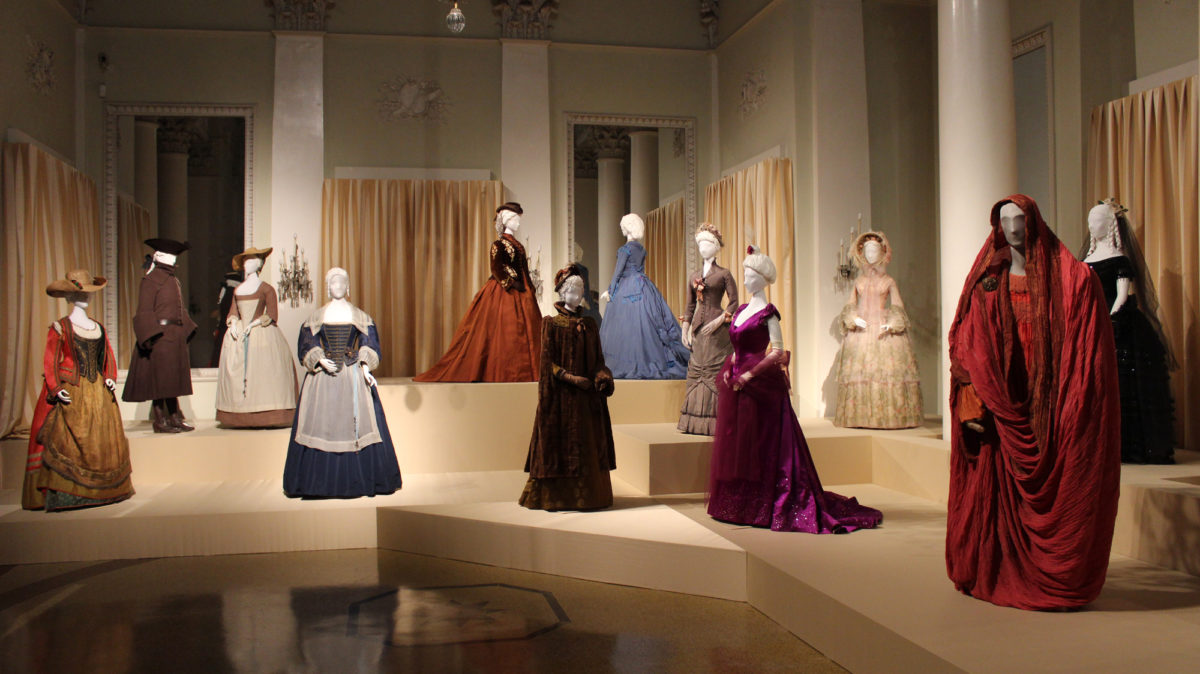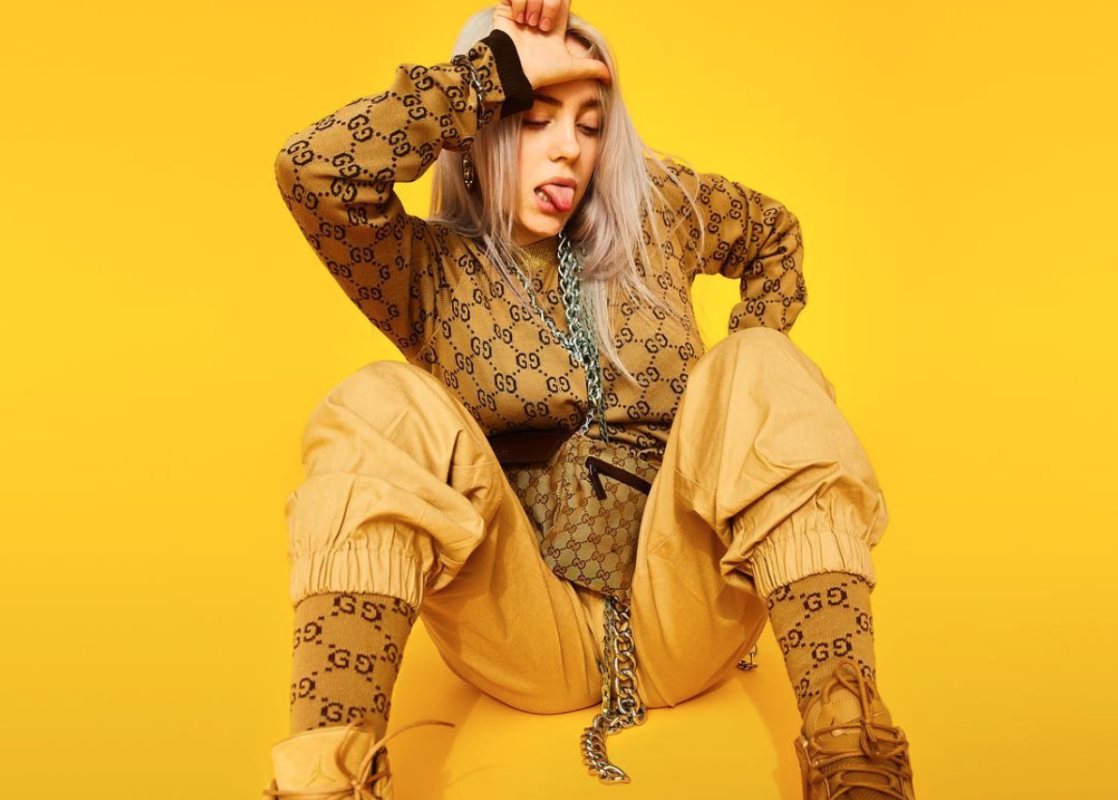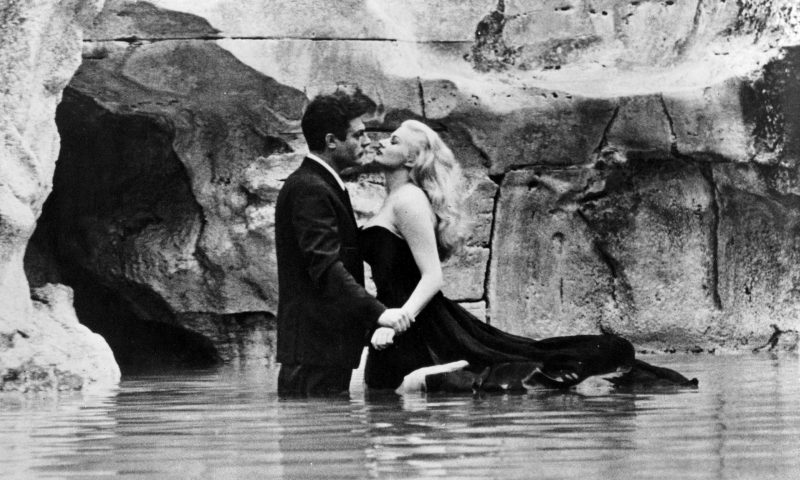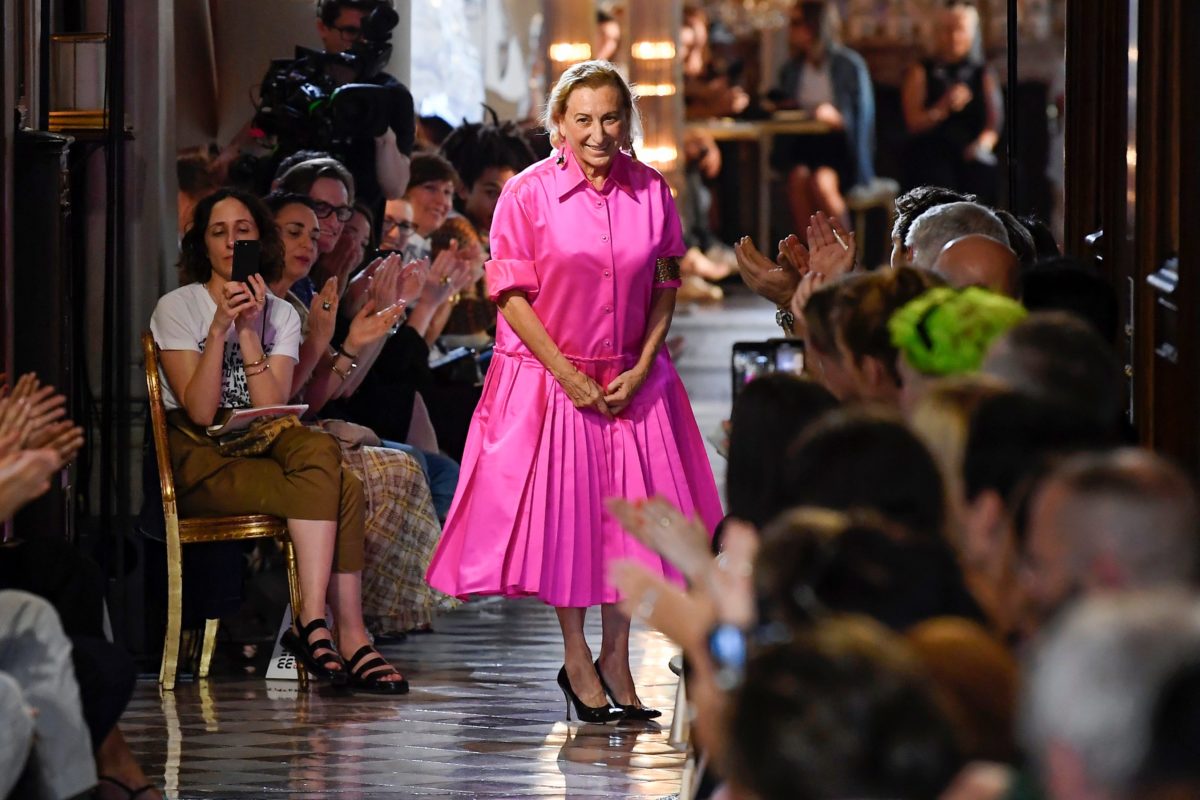
In our ever accelerating times, keeping ahead of the latest breaking news and trends from the world’s of fashion, music, film, art, tech, activism, is a time consuming daily challenge ? Sure the information is all out there, but it is a time consuming ordeal to scan all the necessary sources. As Darwin said survival depends on how quickly you can adapt.
The future belongs to those who prepare today.
The History of Italian Fashion
In the last 50 years, the Italian fashion industry has given us fame, scandal, even murder, and it appears there is nothing that can sate our appetite for more.
There is fashion, and then there is the truly sublime. To fully appreciate Italian fashion one needs to walk the Quadrilatero, the handful of sacred cobblestoned Milanese streets where a new pantheon of deities are worshiped, the houses of Gucci, Fendi Dolce & Gabbana, Cavalli, Tod’s et al. On these hallowed boulevards the fashion faithful from all over the world make their Haj. In just a handful of streets, one can be awestruck by the temples of Italian luxury fashion. This is not some run of the mill suburban mall this is transcendence.
One time skilled artisans and humble shopkeepers have exploded into globalised corporate powerhouses equipped with formidable engines of growth. Sophisticated multinational conglomerates who have mastered the arts of manufacturing desire with their use of marketing and image in addition to that of design and craftsmanship.
The global rise of Italian fashion can be traced back to the 1960’s when scores of international Jet-set dress buyers and status seekers flocked to Rome, as much for the couture designs of Valentino and Roberto Carpucci as for the search of La Dolce Vita. The jewelled island of Capri was their playground. Florence was famous for leathergoods and gold, and it didn’t hurt Florentine fortunes that Pucci and Ferragamo were Jet set must haves. In the 1970’s fashion heralded the arrival of ready-to-wear and the demand for practical masculine styled clothing that women could wear to work and Milan rose to power as Italy’s fashion epi-center. From this background rose the Italian fashion dynasties such as Armani, Gucci, Prada, Fendi and many more.
In the 1950s and ‘60s, “Moda Italiana” emerged as a trailblazing force in fashion. Over the past 50 years, designers like Gucci, Valentino, Versace, Armani and Prada have broken through the French monopoly on high fashion, staking the Italian school’s claim on haute couture.
The French fashion elite can no longer look down their noses at Italian style. Today, Italian Fashion is at the forefront of luxury. And the picturesque city of Milan is at the epicentre. During Milan Fashion Week, some of the most famous labels on the planet showcase their designs, and fashion aficionados and devotees alike flock to the northern city.
But what led to Italy becoming a world leader in fashion?
The legacy of Italian design stretches back as far as the Middle Ages, where the Italian textile industry was already making a name for itself internationally. City states such as Milan, Venice, Florence, Naples and Rome produced velvet, silk and wool that were prized for their quality. In the Renaissance, the textile industry was shaped by the art of the old Italian masters- Da Vinci, Michelangelo and Raphael. To wear Italian clothing was to be extravagant, opulent. Expensive fabrics and intricate tailoring were an obvious show of wealth and status.

To this day, luxury and quality are one and the same in Italy. Skilled artisans and humble shopkeepers have honed their crafts and technical processes over generations, lending a long heritage of historic expertise to the modern exploration of aesthetics and style. Italian fashion skilfully combines its cultural roots in the artisanal trades of tailoring, leather work and cobbling with innovatory artistic takes on clothing.
Many of the modern Italian fashion houses have their roots in a family tradition of craftmanship. The Italian look draws on this existing prestige, afforded to it from the superior quality of leather goods and tailoring. Italian luxury fashion reveals exquisitely well-made garments and accessories, emblematic of a distinct pride in one’s appearance and adornments.
Like many Italian designers, the House of Gucci rose from humble beginnings. Guccio Gucci son of a leather goods merchant from the north of Italy, Gucci initially avoided following in his father’s footsteps. The first Gucci shop was founded in Florence in 1921. The brand quickly became known for its superior craftmanship and attention to detail. Gucci’s main business came from making saddles and accessories for horse riding, such was the unparalleled quality of its leather work. The label’s signature horse-bit detail on its loafers and red and green stripe inspired by saddles are remnants from Gucci’s past. Elizabeth Taylor and Peter Sellers were both notable fans of unisex Gucci totes.
Today, Gucci is now known for its controversial history in advertising. Tom Ford has been celebrated for bringing the brand into the modern world. The brand is now synonymous with overt sex appeal and has succeeded in cracking the difficult millennial and Gen Z markets.

Like in the era of the Renaissance, Italian fashion in the ‘20s and ‘30s was heavily influenced by art. But now it was surrealist painters like Salvador Dali who shook up what clothing could mean and express. Designer Elsa Shiaparelli was a significant player in the creation of Italy’s style identity, taking Italian fashion into the modern age. One of the most prominent figures in fashion during the 1920s and ‘30s, Shiaparelli is as well known for her designs as for her rivalry with French fashion icon Coco Chanel. Her lobster dress is a perfect example of a garment functioning as an artistic canvas. Wearable art was finding its feet.
Fendi is another Italian label clearly shaped by its time. Founded in 1925, Fendi’s history is controversially charged in the eyes of modern fashion devotees. The brand was launched by Edoardo and Adele Fendi as a fur and leather shop, with a workshop adjoining it next door. But their daughters, Paola, Anna, Franca, Carla and Alda, should be credited for the brand’s global fame and success. The five daughters all worked in the family business from a young age, devoting their lives to the fashion label. Karl Lagerfeld joined the brand in 1965 as creative director for fur and women’s ready to wear. Along with the Fendi sisters, Lagerfeld revived a global interest in fur fashion, to the anger of animal rights activists.
The backlash against fur in fashion has reached such a height, that in 2018 the label began to faze fur out of its collections in favour of cruelty-free options, man-made materials cleverly treated to replicate fur. Time will tell if the brand will cast off its roots in the fur trade for good. But it’s clear that Fendi’s adaptability is a guide to the future of haute couture. After the horrors of World War II, Paris resurrected its industry. And so too did Italy, re-building its industry from the ground up. It wasn’t until after the world wars that Italy’s fashion industry gained the economic support that it needed to forge its identity. American aid for Italy’s textile business spurred the production of luxury materials prized to this day.
In contrast to French labels at the time like Christian Dior, which focused purely on couture, Italian designers understood the need for ready to wear, comfortable clothing that also held an air of sophistication. This idea really took off in the American market. Fashion house Sorell Fontanta headed by three sisters—Zoe, Micol, and Giovanna —was a powerhouse of Old Hollywood glamour. In this era, the “Made in Italy” label was a sign of a garment’s quality and must-have status. France and Italy remained fierce rivals during this era, however Italy managed to tear away from the French mode and truly come into its own.

The emancipation from French fashion was crucial to Italy’s modern cultural character. In the 1950s, Hollywood stars flocked to Rome and Florence. Elizabeth Taylor and Richard Burton could be seen strolling the cobblestone streets in their finest apparel. Audrey Hepburn was a frequent visitor to Italy in search of clothing stores and shoe shops. The jewelled island of Capri was a playground for the rich and famous and Florence was famous for leather and gold. Shoemaker Salvatore Ferragamo served the likes of Sophia Loren, Rita Hayworth, Greta Garbo and Gene Tierney. Jet-setting Hollywood stars fuelled the international appetite for luxury Italian clothing.
Often called the pioneer of Italian fashion, businessman Giovanni Battista Giorgini staged Italy’s fist ever internationally recognised fashion show in 1951 at his residence in Florence. The event showed the collections of ten major fashion houses including Carosa, Fabiani, Simonetta, the Fontana sisters, Schuberth, Vanna, Noberasco, Marucelli and Veneziani. Publisher and guest at the event John Fairchild wrote at the time:
“France has Paris, but Italy has Florence. What I like about Florence fashion and I suppose all Italian fashion is that free spirit, ease of Italian chic, as smooth and beautiful as a Ferrari and as delicious as steaming pasta, Italian fashion is irresistible”.
Models walked the stage beneath shining chandeliers, draped in exquisite textiles. The carefully chosen audience was encouraged to wear specifically Italian outfits. Expertly crafted shoes stalked down the runway. Italy was finding its own footing, distinct from the French eye for style. Giorgini foresaw the economic implications of Italian craftmanship. This event seduced American buyers and launched the now multi-billion-dollar industry. The shows continued over the years, cementing Italy as an international beacon of style. Its popularity led to the first Milan Fashion Week in 1958. Milan remains one of the big four Fashion Weeks every year.
Established in 1953, Missoni was born as an innovator in the scene, associated from the beginning with modern takes on patterning, mosaics, patchworks and striking colour. Ottavio Missoni and Rosita Jelmini began the company together, each focusing on design and business management respectively. Rosita’s family history of manufacturing gave the brand a distinct advantage, and they were able to reconfigure knitting machines to create more modern styles than had been seen before. By the 1970s, the Missoni label was a recognisable status symbol. The brand is a leader in material combination, with as many as twenty different fabrics included in one garment. Stripes, scallops, dots, prints and waves embellish the Missoni collections. With their unusual colour combinations and sumptuous fabrics, they stand out as a blend of quality and uniqueness.

Valentino’s debut on the international stage was in Florence in 1962. Designer Valentino Garavani became known for its luxury high fashion and signature red dresses. The label’s exquisite designs are admired for their deluxe quality and sophistication. While unquestionably luxurious, Valentino’s collections were always grounded in reality. The fashion house achieved a signature look that is instantly recognisable, modern and sophisticated. Tradition and innovation are balanced perfectly, making the label distinctively Italian in its style.
The designs hold a vast technical precision, with contemporary takes on past decades’ drapery and silhouettes. Valentino is a brand that is wilfully exclusive. The signature Valentino red is a shade sought after as a symbol of wealth by the fashion elite and beyond.
Just like the old masters and surrealist painters, Italian fashion was greatly influenced by Italian auteur cinema, which flourished alongside Italian fashion’s rise in the ‘50s and ‘60s. Cinema and fashion were twin art forms that often borrowed from one another. Film directors Federico Fellini and Michelangelo Antonioni created a broad cultural narrative that shaped the aesthetic of Italian fashion, with lavish costumes that brought heavily stylised clothing to the fore in Europe. Fellini’s La Dolce Vita, was a tour de force in showcasing Italian glamour, making it something to be envied the world over. The film explored the complexities of the search for love and happiness. The enduring appeal of the little black dress can be traced back to this time in history, entwined within cultural narratives of aestheticism and the pursuit of pleasure.

Fashion at this time held a thin veneer of respectability in the upper echelons of society, while beneath the facade sensuality and sexuality simmered, threatening to bubble up to the surface. The Italian look was redefined in the 1980s and ‘90s. What was once revered for its adherence to classic minimalist aesthetics, albeit with sensual undertones, exploded into striking, bold designs that challenged convention. In this era, many of the well-known fashion houses today flourished, setting the groundwork for the unbelievable wealth and fame that was to ensue.
Versace, Salvatore Ferragamo, Gucci, Prada and Moschino exploded as giants in the fashion world. These labels defined the look of an era.
Dolce & Gabbana had its first runway show during this period, in 1985. The label headed by Domenico Dolce and Stefano Gabbana, had a significant role in Italian read-to-wear fashion. The brand’s signature fluidity and lack of adherence to convention quickly forged a loyal following. The founders are seen as the progenitors of a distinctly Mediterranean style, inspired by the likes of screen siren Sophia Loren. The Dolce & Gabbana woman holds two identities within her: that of a brazen and bold independence and also a family and church-devoted spirituality. This duality is typical of Catholicism is Southern Italy.
In 1994, the brand released the D&G label, influenced by street-style and with a focus on the youth market. The brand is famous worldwide for its garments as well as its fragrance collection.

The ‘80s and ‘90s were a golden era for Italian fashion. Gianni Versace was another revolutionary force in Italian fashion that triumphed over these decades. Versace made a name for itself as unapologetic and over the top, its signature colours of black and gold worn in metal, mesh and leather. Founded in Milan in 1978, the brand remains one of the leading international fashion houses.In the ‘80s and ‘90s, the label was at the forefront of trailblazing fashion. Versace is known for flashy, innovative designs that retain a measured, sleek appeal. At the label’s most successful, it courted the favour of the world’s biggest supermodels including Naomi Campbell, Christy Turlington, Helena Christensen, and Cindy Crawford.
In 1997, tragedy hit the fashion world. Gianni Versace, the “Rock n’ Roll designer”, was shot and killed near his Miami Beach mansion. Following Gianni Versace’s assassination, the brand was taken over by his siblings Donatella and Santo Versace. In the decades since, even with it’s ups and downs Versace has gone from strength to strength and remains one of the most sought-after and recognisable brands in the world.
Anna Wintour told The New York Times that Versace “was the first to realise the value of celebrity in the front row, and the value of the supermodel, and put fashion on an international media platform.”
Another brand whose name has eclipsed the clothing itself in terms of fame, is Prada. One of the most iconic brands in history, and a common shorthand for luxurious fashion, Prada has proven its staying power over its 106-year lifespan. Like Gucci, Prada began as a leather goods store. The brand’s elevation to the Official Supplier of the Italian Royal House has imbued it with an unmatched prestige.
Although Mario Prada’s patriarchal beliefs forbid female family members from working at the company, his daughter Luisa Prada became his successor and ran the business successfully for almost two decades. Today, granddaughter of Mario, Miuccia Prada has taken the label global. Known for its eccentric flair, the essence of the brand is an overturning of traditional aesthetic ideas. Prada is brash, it flouts the rules. Miuccia Prada: “Ugly is attractive, ugly is exciting. Maybe because it is newer. The investigation of ugliness is, to me, more interesting than the bourgeois idea of beauty.” The traditional Italian look is eclectic. An outfit is formed from a collection of quality, well-made items with a neutral base that forms a canvas for bold statement pieces, and this can still be seen in Italian street style.

Emporio Armani was founded in 1975 by Giorgio Armani, and is a perfect example of Italy’s love of timeless style. Classic, timeless pieces are the bread and butter of Italian style and Armani exemplifies the Italian look. High-quality leather belts perfectly cinch trousers and show the body’s silhouette. Simple yet enduring pieces are revered worldwide for their well- made beauty.
Even a simple pair of jeans must be of the highest quality and a perfect fit. Practical items like watches, sunglasses and handbags are afforded glamour and sophistication by virtue of their brand pedigree and the value infused by the Armani name. Armani is one of the biggest names in high-end ready to wear fashion globally. The secret to its success lies in its targeting of the middle class, a group characterised by their obsession with image but lack of access to true couture collections. A common thread of clean, simple styles unchanged by the whims of fashion runs through the Armani brand. For this reason, Armani is a textbook example of Italian design.
Italians possess an immeasurable pride in their fashion. Over the past two decades, Italian fashion labels have reinvented themselves, combining the Italian love and reverence for tradition with glamorous collections that optimise modern haute couture. Italian fashion has shaped the fashion world and continues to do so. Only time will tell how the Italian look will continue to revolutionise style the world over.
It’s hard to imagine a culture that has had more of an impact on the world’s style. Italian fashion has always held dualities within its style: conservatism and progressivism, tradition and innovation. As the whims of fashion ebb and flow into the future, fresh faces on the Italian scene are sure to shake up Italy’s sartorial archives and set the world ablaze with revolutionary movements. But it is also clear that the old guard of Italian fashion will hand the reins over to new creative leaders, ensuring that their legacies will be around for generations to come.
FIB Trend Reports: Breaking News From Around The World
Charles Darwin said “It Is Not the Strongest of the Species that Survives But those Fastest to Adapt”
If you want to want to know where your world is headed first subscribe to the FIB Platinum Curated Content Membership.
Custom designed for knowledge workers and creatives, our unique TIB curated Content Platinum Membership, puts the latest popular culture, news, and trend breakdowns directly into your hands each week, faster than your competition has time to discover them.
So you can hear first, act first, profit first.
CLICK THE LINK to SUBSCRIBE. If you like please share and write a review. See you next time.
https://desiregroupe.samcart.com/products/platinum-membership-annual






